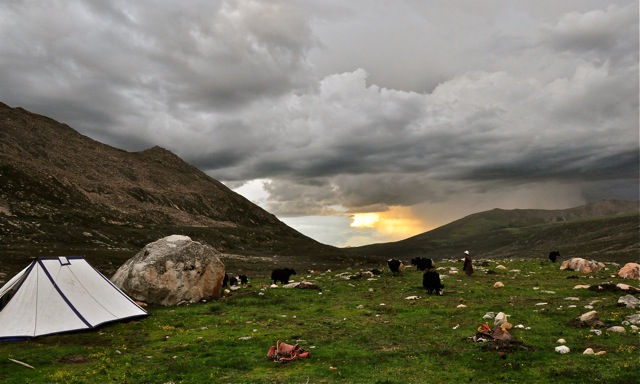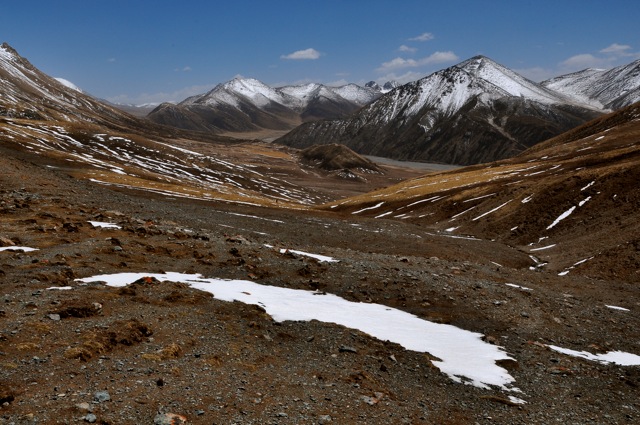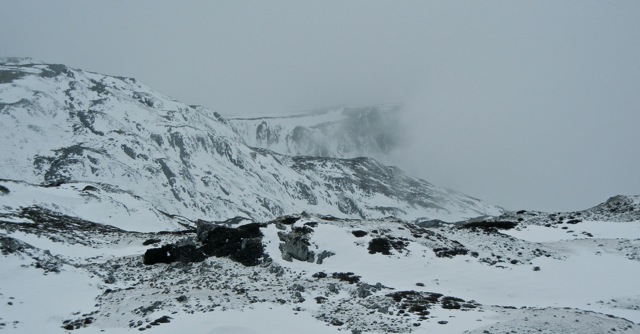Peaks and mountain spires often steal the dreams and minds – with billowing snow-encrusted lines, thin-aired risks and altitude numbers that defy the mind. Lying beneath these heights wedged and curled into the main body of mountains lay worlds that contrast with their daunting cousins above. These are not the worlds of barriers and blockades; they are the worlds of movement and routes.
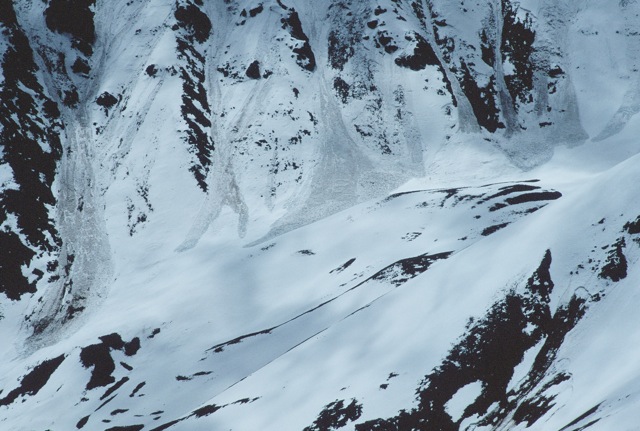
Entry point into the Salween Divide, Shar Gong Pass in eastern Tibet is a gateway that for much of every year is blocked by snow
Valleys and passes have long been taken for granted even though it has long been their linking lengths and ushering forces that have funneled bodies into the great mountains. One crucial facet of the mountains, quiet and rarely mentioned in western chronicles remains an essential in any of the globe’s stone faced heights, still: the pass, or in the words of Tibetans, the “la”.
On a recent expedition along the nomadic Salt Road (Tsa’lam) in Qinghai province (Amdo) the importance of the pass was once again made clear. Known to much of the Himalaya’s population the word ‘la’ has long been a suffix attached to the end of every pass worth mentioning…and for mountain-bred people the passes are always worth mentioning. Named for deities, attributes or otherworldly qualities the passes are the gateways to beyond.
Upon the Salt Road distances were measured not simply in days and weeks but in the number of passes or valleys crossed. Too often (particularly in the west) the paths, the routes and the striating strands to pass through the mountains are overlooked, as the race to cross a range, summit a peak and ‘attain’ a mountain dominates interest. For the those living within the domain of the mountains physical geography wasn’t (and still isn’t) simply something to surmount, surpass and struggle against; it was/is a way in which journeys and lives are measured. Geographies are inevitabilities.
In the sage words of a nomadic trader I met years ago, “it is in the valleys and passes below where the stories of the mountains are written”. It is also within the valleys and upon the passes where successful travels and efforts to cross the mountains are forged…or find their undoing.
On the Tea Horse Road, an eight-month journey that occupied (and still does occupy) my mind and body, the 1500 km portion between Gyalthang (Zhongdian) that myself and five local Tibetans took, again and again we heard the names of the famed passes from the mouths of traders. Sho la, Shar Gong la, Nup Gong la, Banda la, Tro la and Jelep la….these names of passes rang within us, as much demarcation points in the mind as they were on the land. A good friend of mine, who has long joined me upon my mountain wanderings once said to me “for every famous peak, there are dozens of more important passes”. I took these words to heart for it was the passes and valleys that most often described a geography’s character.
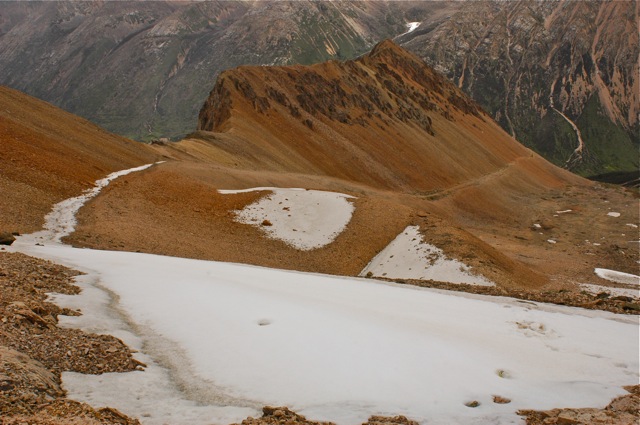
Known to the Tibetan muleteers as Tro la, Crying Pillar Pass was one of the final passes before reaching Lhasa. It was notorious and took a great toll upon lives...valleys of bones lie nearby for those who weren't successful in crossing its five thousand plus crest.
The famed “Tro la” marking the western most exit point from the Nyanqentanglha Mountains in central Tibet is translated into “Crying Pillar Pass” because of the physical grief it caused caravans. Upon our own ascension of the this five thousand metre pass, we initially smiled as we gazed upon it – smooth and un-technical it struck us as a pass that could be surmounted in a couple of hours.
Half a day later we were still hauling our withering forms over its shale-covered surface. It had, as the legends said, taken every last breath and piece of sinew to ascend with our packs bringing us to a point of near defeat.
The beauty of mountain legend is that most of the origins derive from the tangible experiences that befall and inspire the body and mind. Mountains and their wide domains are rarely (if ever) theoretical or ambiguous.
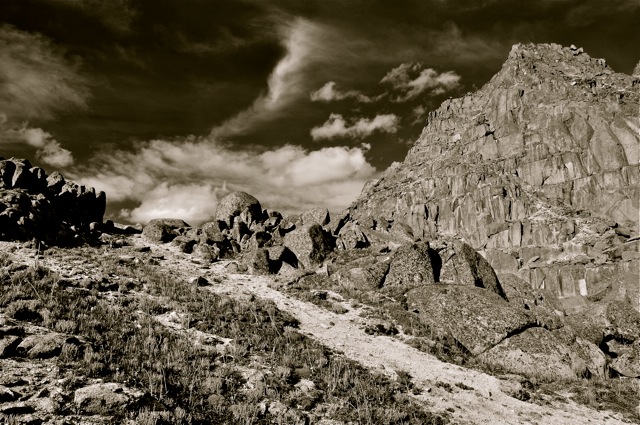
Mountain passes are still used by wild life and migrants and provide access routes into valleys rarely seen like this one near Litang's Genyen Mountain
Summiting a peak brings one to the pinnacle, and to an end point; making one’s way over a pass conversely shoves the world of senses not only into another frame, it sets us to go further on into another journey through another geography.
Upon the Tibetan plateau, people often refer to eachother by origin, going so far as to differentiate those who live in the valleys as ‘rom’ba’ from those who live in the wind carved heights ‘drok’pa’ (nomads). The rom’ba are known for their playful tales, sense of humour and singing where as the drok’pa are viewed with trepidation, for their fierce abilities in the arts of war, and a primal toughness.
Geography was and still is, much more than simply something that the eyes and ears take in, it provides a very unambiguous ‘shaper’ of peoples and their views.
When one ‘arrives’ to a destination within the mountain realms, the arrivals are inevitably met with questions about the journey – there are rarely comments on the peaks in their distant heights. It is the passes and valleys which are most frequently referred to, for it is here where the travelers’ journeys succeed or fail.
Passes are often as dramatic and fierce, as dreamy and hallucinatory as any peak and certainly for the secular world at least, they are the domains about which tales are most often told.


